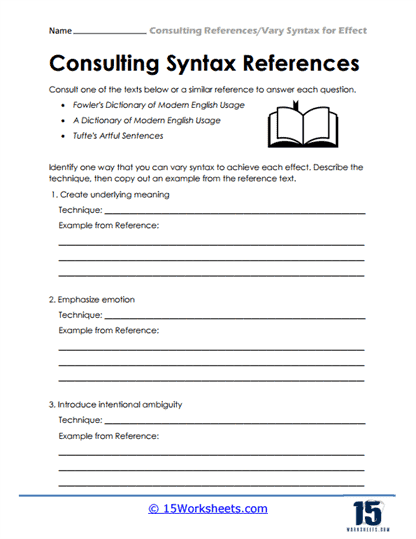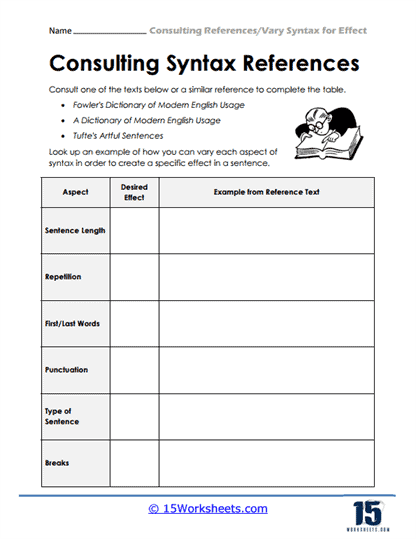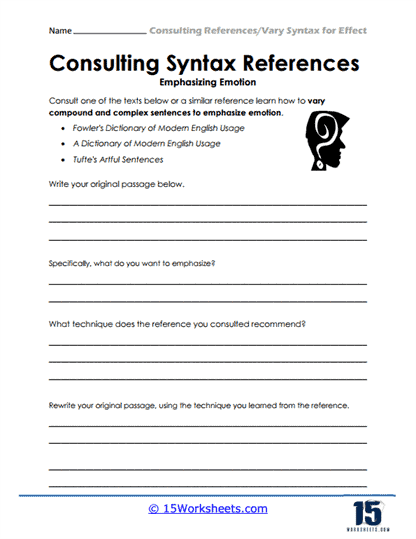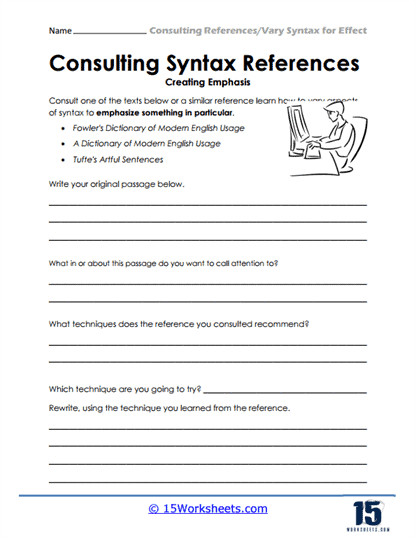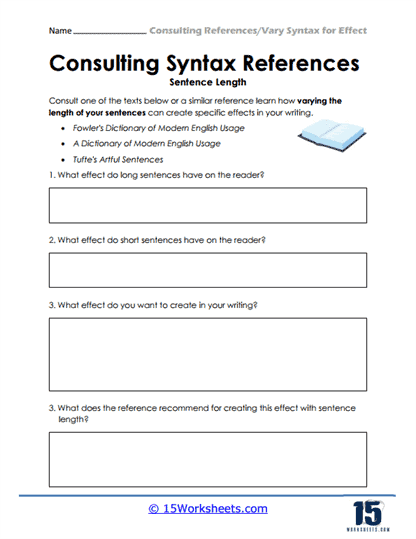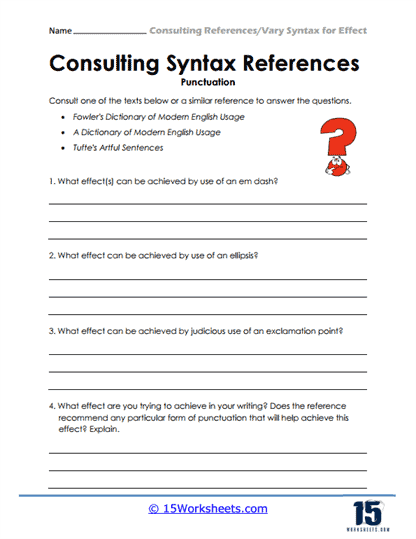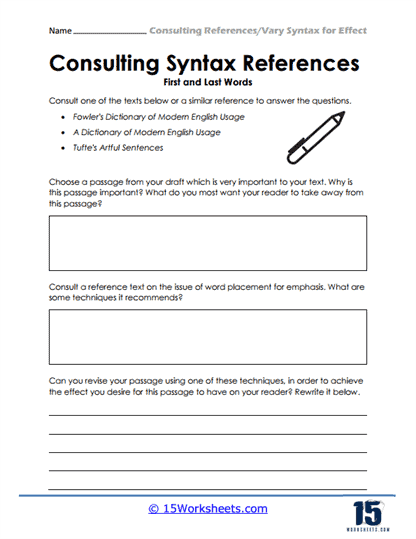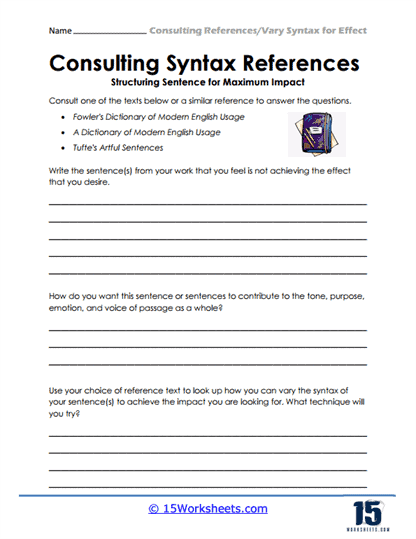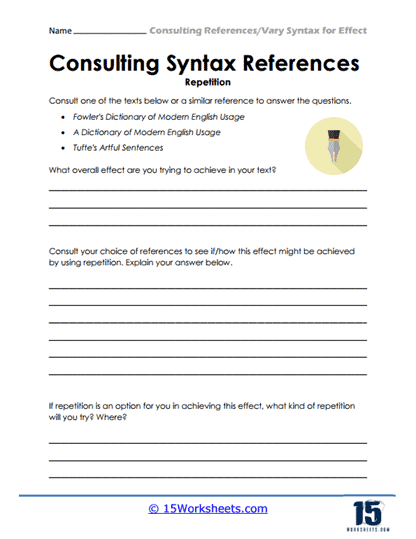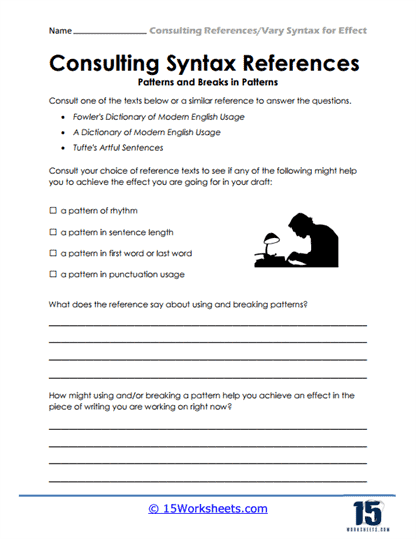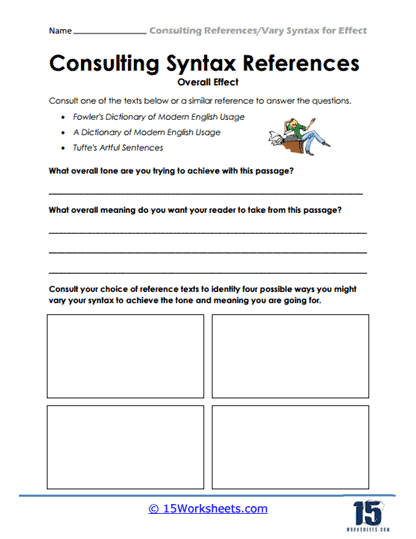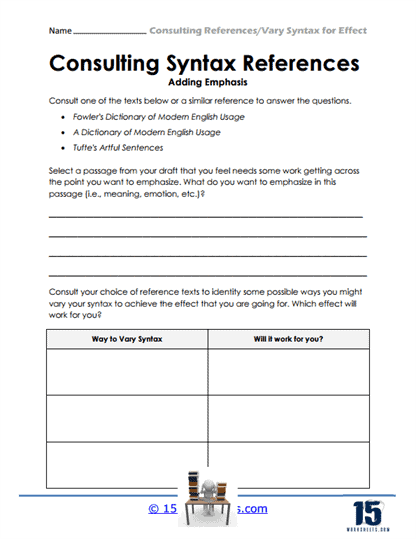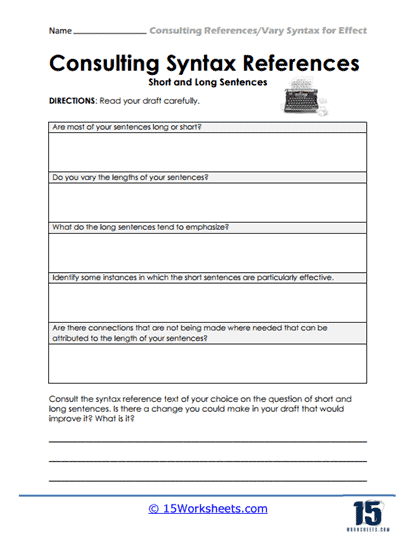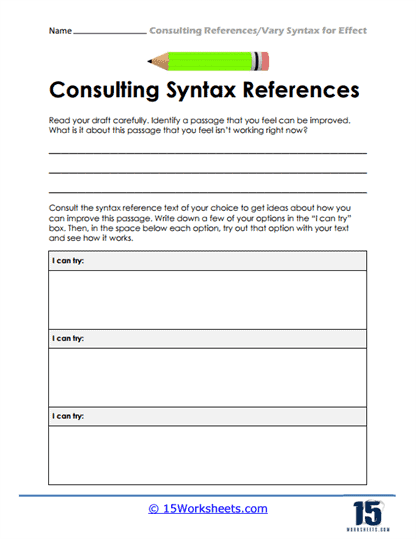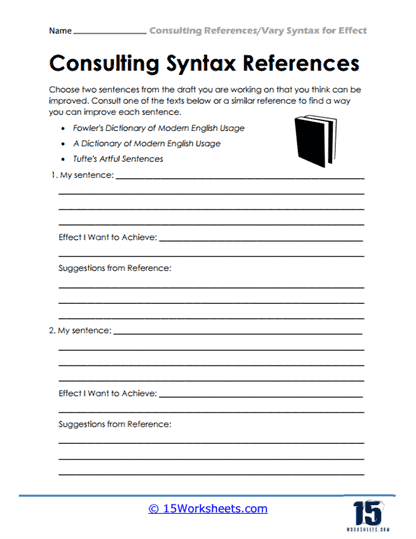Consulting References Worksheets
All About These 15 Worksheets
This series of 15 worksheets is designed to help students develop the abilities to consult syntax references effectively. Each worksheet provides students with guided exercises and practical strategies to enhance their understanding and application of syntax rules and conventions.
This series caters to students across different grade levels and language proficiency levels, offering a range of worksheets that cover various aspects of consulting syntax references. Through these worksheets, students will:
- Grasp the fundamental principles of sentence structure, parts of speech, and grammatical patterns;
- Develop an awareness of how syntax influences meaning and clarity in writing;
- Apply syntactic principles to vary their sentence structures for stylistic purposes;
- Revise and edit their writing to improve syntactic flow and structure;
- Identify common syntactic errors, such as subject-verb agreement, parallelism, and pronoun-antecedent agreement;
- And learn to identify and correct any issues related to syntax, ensuring their writing communicates effectively and accurately.
This series of worksheets serves as a valuable resource for teachers seeking to enhance their students’ writing skills and promote a deep understanding of syntax. By engaging with these worksheets, students develop the abilities to consult syntax references effectively, analyze sentence structures, and refine their writing through precise and grammatically correct syntax.
How to effectively consult syntax references
Consulting syntax references can greatly benefit students in their writing. Here are some tips for students on how to effectively consult syntax references:
Familiarize Yourself with Syntax References
Take the time to become familiar with reliable syntax references, such as grammar handbooks, style guides, or reputable online resources. Explore their contents, organization, and the specific syntax rules they cover. This familiarity will help you navigate and utilize these references more effectively.
Identify Specific Questions or Areas of Uncertainty
Before consulting a syntax reference, identify the specific syntax-related questions or areas where you need clarification. This targeted approach will allow you to find the relevant information more efficiently and address your specific writing challenges.
Use Clear and Specific Keywords
When searching for syntax guidance, use clear and specific keywords related to your question or concern. This will help you find the most relevant sections or explanations within the reference materials. Use terms like “sentence structure,” “subject-verb agreement,” or “comma usage” to narrow down your search.
Follow the Organization and Structure
Pay attention to the organization and structure of the syntax references you consult. They often present information in a logical sequence or alphabetical order. Follow the provided headings, subheadings, or index entries to locate the relevant information related to your query.
Read and Understand the Explanations
Once you find the relevant section or explanation in the syntax reference, read it carefully to understand the concept or rule being discussed. Take note of any examples provided to illustrate the syntax rule and how it applies in different contexts.
Apply the Syntax Rule to Your Writing
After understanding the syntax rule, apply it to your own writing. Evaluate your sentences or passages to see if they adhere to the rule or if any adjustments are necessary. Revise and edit your writing accordingly to improve sentence structure, grammar, and overall clarity.
Seek Clarification or Examples
If you encounter complex syntax rules or have difficulty applying them to your writing, seek additional clarification or examples. Consult your teacher, seek guidance from peers, or look for supplementary resources that provide further explanations or practice exercises.
Review and Practice Regularly
Consulting syntax references should be an ongoing practice. Regularly review the syntax rules and guidelines to reinforce your understanding. Integrate them into your writing practice and assignments, seeking opportunities to apply and refine your knowledge of syntax.

